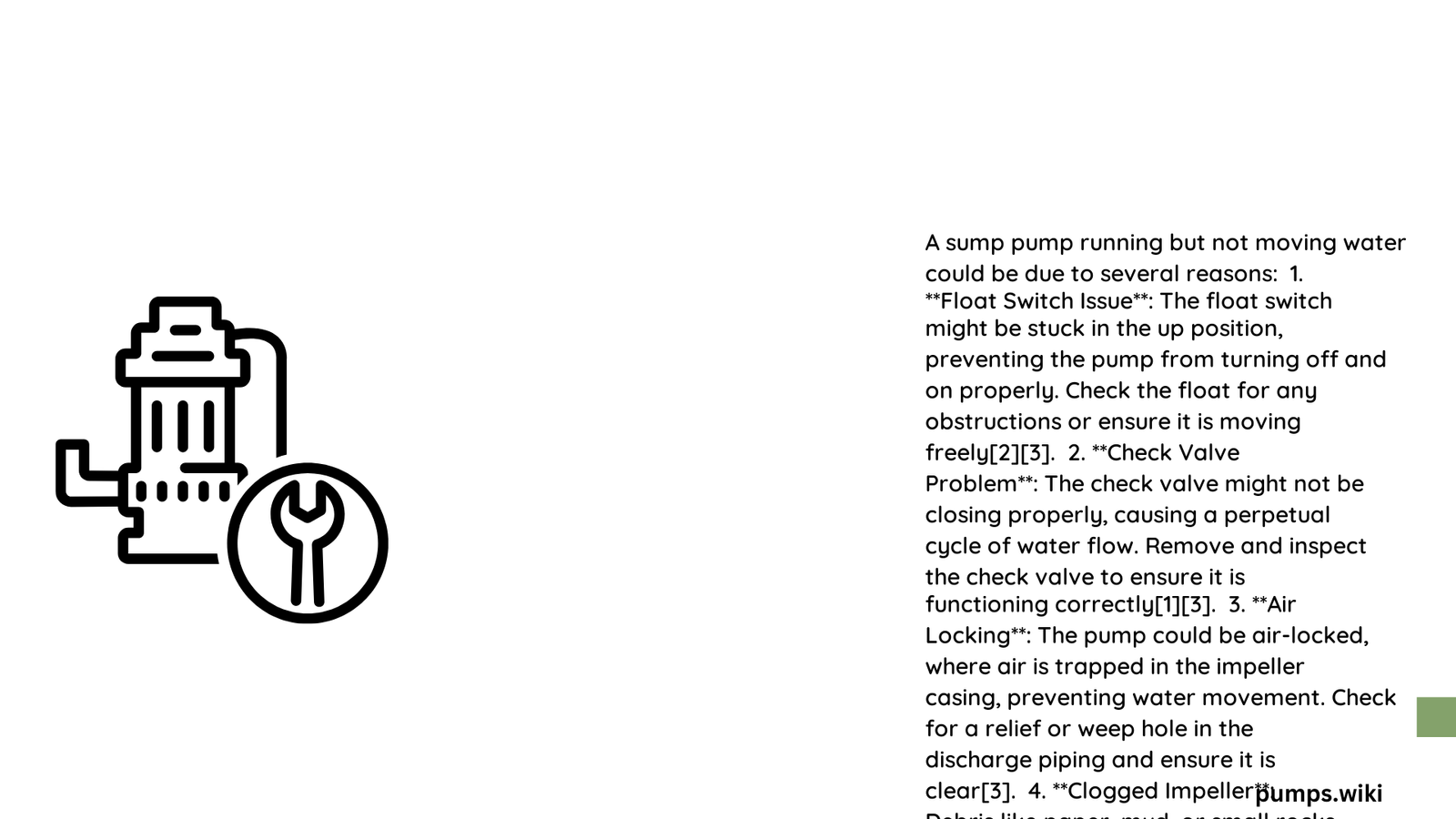When a sump pump runs continuously without effectively removing water, it signals a critical system malfunction that could lead to potential basement flooding. Homeowners experiencing this issue need immediate diagnostic steps to prevent water damage, understand the underlying mechanical problems, and restore the pump’s functionality through targeted troubleshooting and potential repairs.
What Causes Sump Pump to Run Without Water Removal?
Can Motor Problems Prevent Water Movement?
Motor issues are a primary reason for sump pump inefficiency. Several critical factors can compromise motor performance:
Motor Diagnostic Checklist
| Symptom | Potential Cause | Recommended Action |
|---|---|---|
| Humming Sound | Electrical Blockage | Check Power Supply |
| Overheating | Voltage Irregularities | Inspect Electrical Connections |
| No Water Discharge | Mechanical Obstruction | Examine Impeller |
Key Motor Failure Indicators:
– Unusual noise during operation
– Inconsistent pump cycling
– No water movement despite continuous running
Why Do Check Valves Fail?
Check valve malfunctions can significantly impair water removal capabilities:
- Valve Positioning: Incorrect installation prevents proper water flow
- Material Degradation: Rubber components can deteriorate over time
- Debris Accumulation: Sediment buildup blocks valve movement
How Do Discharge Pipes Impact Water Removal?
Discharge pipe complications can completely halt water movement:
- Potential Blockage Sources:
- Mud and sediment accumulation
- Frozen sections during winter
- Improper pipe angle
- Insufficient pipe diameter
What Happens When Float Switches Malfunction?
Float switch failures create significant pump operational challenges:
Float Switch Troubleshooting Steps:
– Verify switch movement
– Check for physical damage
– Ensure unrestricted vertical motion
– Test electrical connectivity
Professional Diagnostic Recommendations
When to Seek Expert Help
- Persistent pump running without water removal
- Multiple component failures
- Complex electrical issues
- Age of sump pump exceeds 7-10 years
Prevention and Maintenance Strategies
Proactive Maintenance Checklist:
– Annual professional inspection
– Clean sump pit regularly
– Test pump functionality quarterly
– Replace worn components promptly
Technical Specifications to Consider
Optimal Sump Pump Parameters:
– Horsepower: 1/3 to 1/2 HP
– Discharge Rate: 30-50 gallons per minute
– Voltage: 120V standard
– Pipe Diameter: 1.5-2 inches
Cost Considerations
Repair vs Replacement Breakdown:
– Minor Repairs: $100-$300
– Major Component Replacement: $400-$600
– Full Sump Pump Replacement: $500-$1,000
Conclusion

Understanding why a sump pump runs without moving water requires systematic investigation. By recognizing potential mechanical, electrical, and structural issues, homeowners can effectively diagnose and resolve pump inefficiencies.
